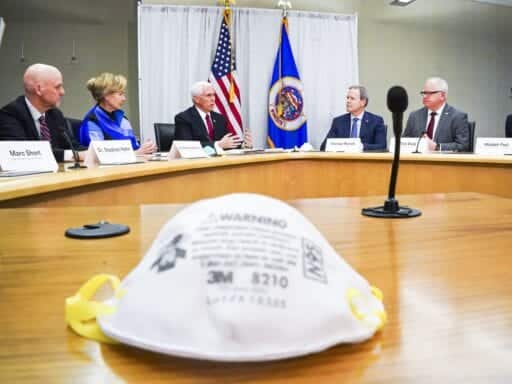America bought time with border controls, and didn’t use it.
Coronavirus is dominating headlines and posing a lot of urgent policy questions that are outside the realm of the kind of things we normally discuss in American politics. So on the most recent episode of The Weeds, I sat down with Josh Michaud, the associate director for Global Health Policy at the Kaiser Family Foundation, to try to learn a few things.
He’s an epidemiologist and health policy expert able to shed light on the intersection between the medical and political aspects of the coronavirus outbreak — including how the US’s policy choices could make the problem even worse.
There’s a lot to learn about this, so I of course recommend you listen to the whole episode.
But these were my seven key takeaways:
- In the typical case, Covid-19 will generate flu-like symptoms, and just like the flu will mostly not require hospitalization or pose a risk of death. In that sense, a typical non-elderly person who isn’t immunocompromised or for some other reason at unusually high risk does not have all that much to fear from coronavirus and shouldn’t panic.
- On the other hand, while severe cases of Covid-19 are a distinct minority of cases, they appear to be a much larger minority than what we see with seasonal flu. A large swath of Covid-19 patients end up requiring hospitalization, and the mortality rate appears to be several times higher than for the flu. These adverse outcomes are highly concentrated among the elderly, meaning that while the risk to the typical person is low, the risk to specific population subgroups is high.
- A particular risk with coronavirus (or any outbreak) is that it occurs in addition to all the other health problems of the world. Health care systems in the United States and around the world do not typically carry a lot of spare capacity. So a big surge in the number of people requiring hospitalization risks overwhelming health care systems. That’s particularly true because, as with any new virus, frontline health care workers are relatively likely to get sick, thus diminishing capacity.
- The fact that most Covid-19 cases are mild is good news on one level, but it also makes the virus hard to contain. The typical infected person develops mild symptoms that are not readily distinguishable from those of a normal cold or flu, so you can’t tell who has coronavirus unless you do a special test. And those with mild cases will generally remain ambulatory and capable of going about their business — unwittingly spreading infection to friends and colleagues and putting vulnerable populations at risk.
- Because coronavirus is not easy to detect, when it first arose in Wuhan, China, it quickly got out of control. By the time enough severely ill people were in the hospital for authorities to realize there was a new virus in play, mild cases had spread the illness, and they were left playing catch-up.
- China eventually acknowledged the scale of the problem and began to lock down travel and curtail social interactions, dramatically slowing the spread of infection. At the same time, foreign countries imposed restrictions on Chinese travelers, slowing further spread of the infection. But due to the hard-to-detect nature of coronavirus, those border control measures were doomed to eventually fail — though they did buy time.
- The case of Singapore (and eventually China) shows that with effective policies in place, the infection can be controlled. But that requires aggressive, proactive measures, widespread testing, and compliance with directives to self-isolate and practice social distancing. The United States did successfully buy time with border control measures but did not actually use that time to get an infection surveillance infrastructure in place, and is now playing catch-up — running a big risk of the problem becoming much more serious.
Author: Matthew Yglesias
Read More



